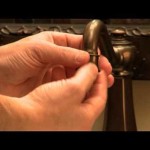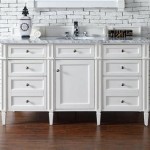Why Is My Bathroom Always Damp?
A perpetually damp bathroom is a common household issue. This persistent moisture isn't just unpleasant; it creates a breeding ground for mold, mildew, and other harmful microorganisms. Understanding the root causes of this dampness is the first step towards effective remediation.
Inadequate Ventilation: Perhaps the most frequent culprit behind bathroom dampness is poor ventilation. Bathrooms generate significant moisture from showers, baths, and even routine handwashing. Without proper ventilation, this moisture lingers in the air and settles on surfaces. An ineffective or absent exhaust fan fails to expel the humid air, perpetuating the damp environment.
Showering Habits: Long, hot showers, while relaxing, contribute significantly to humidity. The hotter the water, the more steam it produces. This steam, if not adequately vented, condenses on cooler surfaces like walls, mirrors, and the ceiling, leading to dampness.
Leaks: Hidden leaks can be a subtle yet significant source of persistent moisture. A dripping faucet or a slow leak in the toilet tank may seem minor, but over time, they release a considerable amount of water. Likewise, leaks within the plumbing system, concealed behind walls or under the floor, continually introduce moisture, contributing to the overall dampness.
Lack of Insulation: Cold surfaces, especially exterior walls and windows, are prone to condensation. When warm, moist air comes into contact with these cold surfaces, the water vapor condenses into liquid water. Insufficient insulation exacerbates this issue, allowing for greater temperature differences and, consequently, more condensation.
Drying Clothes Indoors: While convenient, drying clothes indoors, particularly in the bathroom, introduces a significant amount of moisture into the air. This practice is especially problematic in poorly ventilated bathrooms, intensifying the dampness and potentially leading to mold growth.
Blocked or Dirty Vents: Even with a functioning exhaust fan, blocked or dirty vents can significantly hinder its effectiveness. Dust, lint, and other debris can accumulate within the vent, restricting airflow and preventing proper moisture removal. Regularly cleaning the vent cover and ensuring the ductwork is clear is essential for maintaining optimal ventilation.
Improperly Sealed Fixtures: Gaps or cracks around bathroom fixtures like the bathtub, shower, and sink can allow water to seep into surrounding areas. This moisture can accumulate behind walls or under the floor, promoting mold growth and contributing to the overall dampness of the bathroom.
Window Condensation: Bathrooms with windows, especially in colder climates, are susceptible to condensation. The temperature difference between the warm, humid air inside and the cold glass surface leads to water droplet formation. This condensation can drip onto the windowsill and surrounding areas, contributing to dampness.
Wet Bath Mats and Towels: Leaving wet bath mats and towels on the floor or bunched up in a corner prevents them from drying properly. These damp fabrics release moisture into the air, adding to the humidity and creating a favorable environment for mold and mildew growth.
Structural Issues: In some cases, the persistent dampness may stem from underlying structural problems. Cracks in the foundation or exterior walls can allow moisture to infiltrate the bathroom. Similarly, a damaged roof can lead to water leaks that contribute to the overall dampness.
Identifying the Source of Dampness: Pinpointing the exact cause of the dampness is crucial for implementing effective solutions. A thorough inspection of the bathroom, including checking for leaks, assessing ventilation, and examining the condition of walls and ceilings, can help identify the underlying issue. If the source of the dampness is unclear, consulting a professional plumber or building inspector may be necessary.
Addressing the Problem: The solution to a damp bathroom depends on the identified cause. Improving ventilation by installing or upgrading an exhaust fan, sealing leaks promptly, insulating exterior walls, and refraining from drying clothes indoors are common remedies. Addressing structural issues, if present, requires professional intervention.
Maintaining a dry bathroom is essential for a healthy and comfortable home environment. Addressing the root causes of persistent dampness not only improves air quality but also prevents the growth of mold, mildew, and other harmful microorganisms.

Why Is My Bathroom Always Humid Air Boca

How To Stop Damp In Bathroom Expert Guide From Timberwise

How To Stop Damp In Bathroom Expert Guide From Timberwise

What To Know About Bathroom Mold And When You Should Worry

Stop Bathroom Condensation Once And For All

Dealing With Damp In Bathrooms

How To Deal With Bathroom Condensation Big

How To Prevent Reduce Bathroom Condensation By Mira Showers

Stop Bathroom Condensation Once And For All

Avoid Condensation In Your Bathroom Get Rid Of Mould
Related Posts







